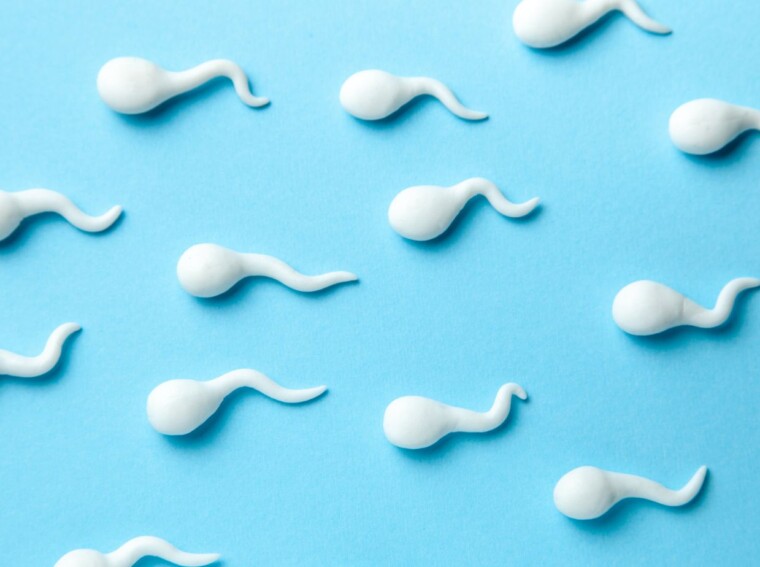In the vast world of sexual health, there’s a common query that often arises among young women -bakireyim zevk suyundan hamile kalırmıyım translated from Turkish, this question means, “I’m a virgin, can I get pregnant from pre-ejaculate?” It’s a topic shrouded in mystery and misconceptions, sparking curiosity and concern.
 This article aims to shed light on this topic, providing clear, scientifically-backed answers. It’s crucial to understand the realities of sexual health, and pregnancy risks associated with pre-ejaculate. Knowledge is power, and in this case, it could be the key to preventing unwanted pregnancies.
This article aims to shed light on this topic, providing clear, scientifically-backed answers. It’s crucial to understand the realities of sexual health, and pregnancy risks associated with pre-ejaculate. Knowledge is power, and in this case, it could be the key to preventing unwanted pregnancies.
Let’s delve into the intricacies of this question, exploring the science behind pre-ejaculate, its potential to cause pregnancy, and how to effectively manage sexual health. This article is your guide to understanding the facts, dispelling the myths, and making informed decisions about your sexual health.
 When it comes to questions about virginity and pregnancy, there’s a lot of misinformation out there. One common question that often arises is bakireyim zevk suyundan hamile kalırmıyım or “Can I get pregnant from pre-ejaculate fluid while still a virgin?” It’s a question that’s been asked by many and the answer isn’t as straightforward as you might think.
When it comes to questions about virginity and pregnancy, there’s a lot of misinformation out there. One common question that often arises is bakireyim zevk suyundan hamile kalırmıyım or “Can I get pregnant from pre-ejaculate fluid while still a virgin?” It’s a question that’s been asked by many and the answer isn’t as straightforward as you might think.
Understanding the biology behind conception can help dispel some of the myths and misconceptions. While it’s less likely, pregnancy from pre-ejaculate is indeed possible. It’s important to know the facts and understand the risks involved.
This article aims to provide clear, accurate information on this topic. It’ll delve into the science behind conception, explore the likelihood of pregnancy from pre-ejaculate, and offer advice on how to protect oneself. Knowledge is power, and it’s crucial to be well-informed when it comes to one’s sexual health bakireyim zevk suyundan hamile kalırmıyım.
Bakireyim Zevk Suyundan Hamile Kalırmıyım
Delving deeper into bakireyim zevk suyundan hamile kalırmıyım this emotionally charged topic, it’s significant to know what pre-ejaculate is all about. Pre-ejaculate, or pre-cum as commonly known, is a fluid produced by a man’s glands during sexual arousal prior to ejaculation. It’s released to lubricate intercourse and vastly enhances the sexual experience for both partners.
The burning question on every virgin’s mind – can I get pregnant from pre-ejaculate?
The answer to this question isn’t as straightforward as it seems bakireyim zevk suyundan hamile kalırmıyım.
Scientific studies on the topic reveal a murkier picture. While it’s a commonly held belief that pre-ejaculate contains no sperm, the reality is slightly different. Some studies have found traces of sperm in pre-cum, contradicting the age-old belief.
 However, it’s key to acknowledge that the presence of sperm bakireyim zevk suyundan hamile kalırmıyım in pre-ejaculate is not a constant across all individuals. Factors like time since last ejaculation and individual physiology greatly impact this concern. Most importantly, higher volumes of pre-ejaculate do not necessarily equate to higher risk of pregnancy.
However, it’s key to acknowledge that the presence of sperm bakireyim zevk suyundan hamile kalırmıyım in pre-ejaculate is not a constant across all individuals. Factors like time since last ejaculation and individual physiology greatly impact this concern. Most importantly, higher volumes of pre-ejaculate do not necessarily equate to higher risk of pregnancy.
Effective management of sexual health is rooted in a comprehensive understanding of these topics.
After all, knowledge destroys myths. Every young woman wondering about this should take note of the crucial point – virginity doesn’t protect against pregnancy. If sperm is present in the pre-ejaculate and it comes into contact with the female reproductive system, there’s a chance for pregnancy.
The most practical and risk-free approach to take would be to always use contraception to keep sexual health risks at bay, even during your first sexual experience.
Arming yourself with credible, scientifically backed information about sexual health is one of the best ways to navigate these confusing and sometimes fear-inducing territories.
Definition of Virginity
Traditionally, virginity has been defined as the state of a person who has never engaged in sexual intercourse. However, the modern understanding of virginity is much broader. It’s not merely about physical activities but also comprises emotional, psychological, and societal factors. When it comes to conception, any exposure to sperm, regardless of the form of sexual activity, can lead to pregnancy. This includes situations where sperm is introduced via pre-ejaculate fluid.
Societal Perceptions of Virginity
 Societal perceptions of virginity greatly vary across cultures and regions. Despite the diversity in belief systems, virginity is often laden with expectations and misconceptions. There’s a common erroneous assumption that someone who’s a virgin cannot get pregnant through pre-ejaculate fluid. This is not entirely accurate. While the chances are slimmer, it’s possible for pregnancy to occur if reproductive cells are present in the fluid.
Societal perceptions of virginity greatly vary across cultures and regions. Despite the diversity in belief systems, virginity is often laden with expectations and misconceptions. There’s a common erroneous assumption that someone who’s a virgin cannot get pregnant through pre-ejaculate fluid. This is not entirely accurate. While the chances are slimmer, it’s possible for pregnancy to occur if reproductive cells are present in the fluid.
Having said that, it’s essential to take precautionary measures to ensure safety, regardless of one’s sexual status. Employing safe sex measures consistently can prevent unplanned pregnancies and sexually transmitted diseases, ensuring that one’s sexual health isn’t compromised.
The virginity status of a person doesn’t necessarily mitigate the risk of getting pregnant from pre-ejaculate. That’s why it’s integral to stay informed on these issues and to apply proper safety measures when engaging in any form of sexual activity. Knowledge is a fundamental ally in the preservation of one’s health and autonomy.
This discussion isn’t finished yet. Continue reading to find out more about the biology of pre-ejaculation and its implications for conception.
The Concept of “Pregnancy from Pleasure Fluid”
In delving into the topic of pregnancy possibility through pre-ejaculate fluid, it becomes crucial to understand the underlying concept and debunk some prevailing myths. This section aims to provide a level deeper understanding of what’s often referred to as “pregnancy from pleasure fluid” and the biology surrounding it.
Debunking the Myth
 Often, society is coined with misinformation and myths regarding the biological aspects of sexual health. The concept of getting pregnant from pre-ejaculate fluid, also known as “pleasure fluid,” is no exception. The idea that one cannot get pregnant from pre-ejaculate fluid has been prevalent for years and people believe this without proper investigation.
Often, society is coined with misinformation and myths regarding the biological aspects of sexual health. The concept of getting pregnant from pre-ejaculate fluid, also known as “pleasure fluid,” is no exception. The idea that one cannot get pregnant from pre-ejaculate fluid has been prevalent for years and people believe this without proper investigation.
On the contrary, according to science, possibility exists. This fluid, which is secreted at moments of high pleasure even before actual ejaculation, may contain sperm. While it is true that pre-ejaculate fluid primarily contains other substances and not much sperm, even a small amount of these tiny cells can potentially lead to a pregnancy.
Understanding the Biology of Pregnancy
To understand the possibility and risk involved, it’s important to delve into the biology of sexual reproduction and pregnancy. During sexual intercourse, sperm cells are typically transported through the ejaculatory fluid into the female reproductive tract. They then navigate towards an egg, and if one is present, pregnancy can occur.
It’s important to note, pre-ejaculate fluid in itself doesn’t contain sperm. The sperm can find their way into this fluid if a man had ejaculated earlier and remnants are still in the penis. Urinating between ejaculations can clear the urethra of sperm and decrease the likelihood of pregnancy.
 Even stakeholders in sexual health education need to be aware of the precise biology of these processes to ensure clear, accurate messaging is delivered. It goes to emphasize the importance of safe sex measures being followed religiously regardless of the level of sexual experience one might have.
Even stakeholders in sexual health education need to be aware of the precise biology of these processes to ensure clear, accurate messaging is delivered. It goes to emphasize the importance of safe sex measures being followed religiously regardless of the level of sexual experience one might have.
Common Misconceptions About Virginity and Pregnancy
 There’s a significant amount of misinformation surrounding the topic of virginity and pregnancy. It’s important to set the record straight and dispel common myths associated with “zevk suyu”, the toilet seat myth, and hymen breakage.
There’s a significant amount of misinformation surrounding the topic of virginity and pregnancy. It’s important to set the record straight and dispel common myths associated with “zevk suyu”, the toilet seat myth, and hymen breakage.
Myth 1: Zevk Suyu
A widely held misconception is that pre-ejaculate fluid, known colloquially as “zevk suyu”, cannot cause pregnancy. Although it’s been shown that pre-ejaculate fluid doesn’t contain a large number of sperm cells, it doesn’t mean it’s impossible for pregnancy to occur. In fact, even a small amount of sperm can potentially lead to pregnancy. Therefore, it’s crucial to remain informed and practice safe sex measures.
Myth 2: Toilet Seat
The toilet seat myth is another enduring fallacy that’s caused confusion and unease. It implies that it’s possible to get pregnant from sitting on a toilet seat if a man’s semen was previously present. Scientifically, this idea is flawed. Sperm needs very specific conditions to survive, and the surface of a toilet seat does not provide them. Not to mention, the chances of sperm making the arduous journey from a toilet seat, through clothing, and into the vaginal canal is highly improbable.
Myth 3: Hymen Breakage
The validity of virginity linked with hymen breakage continues to be another widely held misconception. Many believe that a broken hymen always indicates that a woman is no longer a virgin. However, a hymen can be broken or stretched due to non-sexual activities like sports, using tampons, or bike riding. Moreover, this does not have a direct link with the ability to get pregnant. At the end of the day, understanding the nuances of sexuality and reproductive health is a vital aspect in sexual health education.
How Pregnancy Occurs
 To dispel myths and misunderstandings surrounding pregnancy and virginity, it’s crucial to comprehend how pregnancy occurs. It refers to an intricate biological process involving numerous steps such as the production of sperm, ovulation, and sexual intercourse. These elements contribute to successful conception and subsequent pregnancy.
To dispel myths and misunderstandings surrounding pregnancy and virginity, it’s crucial to comprehend how pregnancy occurs. It refers to an intricate biological process involving numerous steps such as the production of sperm, ovulation, and sexual intercourse. These elements contribute to successful conception and subsequent pregnancy.
The Role of Sperm
At the center of any pregnancy story is the sperm. Sperm are seed-like organisms produced in the male body, and they carry half of the genetic material needed to form a new human being. Men produce millions of sperm each day, a testament to the body’s commitment to continued survival and reproduction.
A man’s body releases sperm during an orgasm. This event typically coincides with ejaculation, when a mixture of sperm and other seminal fluids is expelled from the body. In addition to ejaculation, males may also produce a clear liquid known as pre-ejaculate, or “pre-cum,” during arousal. Although pre-ejaculate itself doesn’t contain a significant amount of sperm, it may carry sperm left in the urethra from previous ejaculations. If it comes in contact with a woman’s reproductive system, there’s a chance, however small, that it could lead to conception.
The Role of Ovulation
A women’s body also plays a pivotal role in the conception process. In the middle of her menstrual cycle, typically every 28 days or so, a woman’s ovaries release an egg in an event known as ovulation.
The egg then becomes available for a sperm to fertilize it. While an egg is viable for 12 to 24 hours after ovulation, sperm can survive inside a woman’s body for up to 72 hours. It implies that for pregnancy to happen, intercourse must occur somewhere in the few days before ovulation and up to 24 hours after it.
The Need for Penetrative Sexual Intercourse
 One common misconception is the belief that pregnancy can happen without penetrative sex. In theory, if sperm comes in contact with the vaginal area, there’s a chance of conception. However, the likelihood of pregnancy significantly increases with penetration because the sperm is placed closer to the egg.
One common misconception is the belief that pregnancy can happen without penetrative sex. In theory, if sperm comes in contact with the vaginal area, there’s a chance of conception. However, the likelihood of pregnancy significantly increases with penetration because the sperm is placed closer to the egg.
Importantly, virginity, which is traditionally described as having never engaged in penetrative sexual intercourse, shouldn’t be confused with an inability to fall pregnant. Various forms of sexual activity, even those that avoid penetration, can result in sperm being near or in the vagina. That’s how sometimes “pregnancy without penetration” can occur. However, it’s important to remember that chances of this happening are relatively rare compared to conventional vaginal intercourse.
The processes involved in pregnancy are both fascinating and complex. Grasping the central factors such as the role of sperm, the event of ovulation, and the necessity for penetrative intercourse is essential to debunk myths around pregnancy.
Importance of Using Protection
Reaching the topic of protection, we find often this aspect is neglected or underestimated. With the current focus on debunking misconceptions about pregnancy and pre-ejaculate fluid, it’s crucial we shed light on the preventive measures as well. Protection is not just about preventing unwanted pregnancies. It also aids in avoiding sexually transmitted infections (STIs). Let’s delve deeper into the various methods of contraception available and the overarching benefits of practising safe sex.
Types of Contraception
 There’s a broad spectrum of contraception methods available, offering the convenience of choice and suitability based on personal preferences and health conditions. Here are a few commonly used methods:
There’s a broad spectrum of contraception methods available, offering the convenience of choice and suitability based on personal preferences and health conditions. Here are a few commonly used methods:
- Oral Contraceptive Pills: They are a popular choice among women for their effectiveness, cost-efficiency and availability. These pills work primarily by preventing ovulation.
- Condoms: Trusted world over, condoms serve dual purpose in not just preventing pregnancy but also protecting against STIs.
- Intrauterine Devices (IUD): A long term method, IUDs are inserted directly into the uterus by a healthcare professional and can prevent pregnancy for several years.
- Emergency Contraceptive Pills: Often referred to as “morning-after pills,” these are used after unprotected sex to prevent pregnancy.
Benefits of Safe Sex
The term safe sex extends beyond the realms of pregnancy prevention and moves into a broader context of overall sexual health. Being responsible during sexual activities can help one avoid numerous potential complications. Here are some key benefits:
- Prevention of STIs: One of the key advantages of safe sex is the reduction in risk of contracting STIs. These infections can have long term consequences on health, making prevention a top priority.
- Elevated Emotional Well-being: An important, but often neglected benefit of practising safe sex is the positive impact it can have on emotional health. Not having to constantly worry about unplanned pregnancies or potential infections can lead to a more relaxed mindset and improved mental wellness.
 Understanding the importance of using protection can make a significant difference in how we approach the concept of safe sex. By focusing not only on pregnancy prevention, but also on ensuring overall sexual well-being, individuals can lead healthier and more fulfilling lives.
Understanding the importance of using protection can make a significant difference in how we approach the concept of safe sex. By focusing not only on pregnancy prevention, but also on ensuring overall sexual well-being, individuals can lead healthier and more fulfilling lives.
What is Pleasure Fluid?
 Pleasure fluid, also often referred to as pre-ejaculate or pre-cum, is a clear, colorless, and odorless bodily fluid that is usually released before ejaculation. This lubricating secretion can play an essential role during sexual activity.
Pleasure fluid, also often referred to as pre-ejaculate or pre-cum, is a clear, colorless, and odorless bodily fluid that is usually released before ejaculation. This lubricating secretion can play an essential role during sexual activity.
Understanding pleasure fluid, its anatomy, function, and constituents, can aid in dispelling common misconceptions and further inform one’s sexual health decisions.
Anatomy and Function
Released from the bulbourethral or Cowper’s glands, pleasure fluid’s primary role is to neutralize the acidic environment of the urethra and flushing out residual urine or sperm. This facilitates the safe passage of sperm during ejaculation, increasing the chances of successful fertilization.
The release of pleasure fluid also aids in sexual activity. By providing lubrication, it allows for smoother and more comfortable penetration, thus enhancing pleasure during the act. Despite its importance, the volume of the fluid varies among individuals, typically from a droplet to about a teaspoon in quantity.
What Does Pleasure Fluid Consist of?
A significant component of pleasure fluid is water. However, it also includes other trace materials. These components include:
- Proteins
- Enzymes
- Mucus
- Sugar (fructose)
- Zinc
 In certain instances, researchers have noted traces of sperm in pleasure fluid. The presence of sperm, however, isn’t common or guaranteed. Factors such as time since the last ejaculation or an individual’s physiology can influence sperm presence in pre-ejaculate, making its existence highly variable among men.
In certain instances, researchers have noted traces of sperm in pleasure fluid. The presence of sperm, however, isn’t common or guaranteed. Factors such as time since the last ejaculation or an individual’s physiology can influence sperm presence in pre-ejaculate, making its existence highly variable among men.
Nonetheless, the presence of even a small number of spermatozoa in the pleasure fluid technically means there’s a potential for fertilization and pregnancy. Therefore, it’s crucial for sexually active individuals, especially young women, to be aware of this and ensure proper contraception usage, even during initially intimate experiences.
The understanding of pleasure fluid and its potential with pregnancy only again emphasizes the indispensability of credible, scientifically backed information. With this knowledge, one’s sexual health decisions can be more informed and secure, allowing freedom within intimate encounters without looming doubts or misconceptions.
Can You Get Pregnant from Pleasure Fluid?
Understanding the potential of pleasure fluid to cause pregnancy is an essential aspect of personal sexual health. Although it’s generally established that the primary cause of pregnancy is the transfer of sperm into the female reproductive system, the notion of pre-cum carrying this capability raises interesting debates with consequential implications.
The Possibility of Pregnancy
 Despite the fact that pleasure fluid primarily consists of compounds such as water, proteins, enzymes, mucus, sugar, and zinc, traces of sperm have been discovered in some cases. The presence of sperm in pre-cum is neither a given, nor a norm, as it varies among individuals and is influenced by a multitude of factors.
Despite the fact that pleasure fluid primarily consists of compounds such as water, proteins, enzymes, mucus, sugar, and zinc, traces of sperm have been discovered in some cases. The presence of sperm in pre-cum is neither a given, nor a norm, as it varies among individuals and is influenced by a multitude of factors.
The reason why pleasure fluid might contain sperm is due to the physiological process; it might inadvertently pick up some leftover sperm in the urethra that was present from a previous ejaculation. But the chances of this happening are typically low, and even lower are the chances of this leading to pregnancy.
While this intrinsic variability exists, it’s important to err on the side of caution. Any instance of sperm entering the female reproductive tract can theoretically lead to pregnancy, making unprotected intercourse a risk regardless of the point of ejaculation.
Factors That Increase the Risk
Several factors can increase the chances of sperm being present in pleasure fluid, hence raising the possibility of pregnancy.
- First off, the time since the last ejaculation plays a significant role. A short interval between two ejaculations can increase the probability of sperm residue in the urethra, which then might mix with pleasure fluid.
- Individual physiology and genetic aspects can also influence the presence of sperm in pre-cum. Some people might naturally have a higher concentration of spermatozoa in their pre-ejaculatory fluid.
The Importance of Safe Sex
 Following an understanding of pleasure fluid and its potential for pregnancy, we now shift focus to The Importance of Safe Sex. Safe sex practices are not just about preventing unwanted pregnancies, but also about protecting oneself and one’s partner from Sexually Transmitted Infections (STIs)
Following an understanding of pleasure fluid and its potential for pregnancy, we now shift focus to The Importance of Safe Sex. Safe sex practices are not just about preventing unwanted pregnancies, but also about protecting oneself and one’s partner from Sexually Transmitted Infections (STIs)
Using Contraceptives
One of the primary ways to ensure safe sex is consistent and correct usage of contraceptives. As it’s now established, even pleasure fluid, in some cases, can contain sperm and might theoretically result in pregnancy. Therefore, it’s crucial that contraceptives aren’t just an afterthought but are something that’s considered from the get-go.
Understanding Pleasure
This comprehensive guide has shed light on the potential of getting pregnant from pre-ejaculate, underscoring the importance of understanding pleasure fluid and its constituents. It’s crucial to realize that it can, in rare cases, contain sperm and lead to pregnancy. Therefore, consistent and correct use of contraceptives is vital, even during initial intimate experiences.
The article has also emphasized the role of safe sex practices in preventing unwanted pregnancies and STIs. Choosing the right contraceptive method that suits both partners is a key factor in this. Condoms, in particular, offer dual protection against both pregnancies and STIs.
 Debunking myths surrounding pregnancy and virginity is crucial. The possibility of pregnancy from pre-ejaculate, although not high, exists. It’s essential to understand the biology of sexual reproduction, including the role of sperm and the process of ovulation. Misconceptions about virginity, such as the significance of a broken hymen, need to be dispelled. Protection plays a vital role in preventing unwanted pregnancies and STIs. Contraceptive methods like oral pills, condoms, IUDs, and emergency pills are effective. Practicing safe sex has numerous benefits, including STI prevention and improved emotional well-being. Understanding these factors is key to promoting overall sexual health.
Debunking myths surrounding pregnancy and virginity is crucial. The possibility of pregnancy from pre-ejaculate, although not high, exists. It’s essential to understand the biology of sexual reproduction, including the role of sperm and the process of ovulation. Misconceptions about virginity, such as the significance of a broken hymen, need to be dispelled. Protection plays a vital role in preventing unwanted pregnancies and STIs. Contraceptive methods like oral pills, condoms, IUDs, and emergency pills are effective. Practicing safe sex has numerous benefits, including STI prevention and improved emotional well-being. Understanding these factors is key to promoting overall sexual health.
Lastly, open communication about sexual health histories, misconceptions, fears, and contraceptive choices is essential before becoming intimate. By adhering to these safe sex practices, individuals can ensure not only their well-being but also that of their partner.


